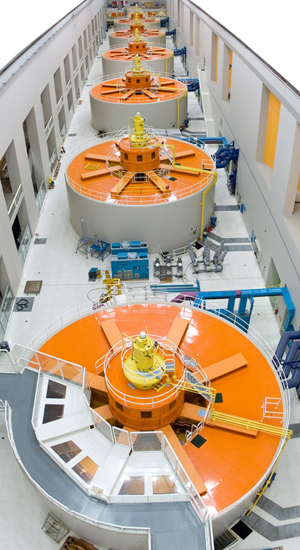The U.S. Army Corps of Engineers is the largest operator of hydroelectric power plants in the U.S., and one of the largest in the world. The 75 Corps plants have a total installed capacity of 20,474 megawatts and produce nearly 100 billion kilowatt-hours a year.
Nearly a third of the nation's total hydropower output, it's enough energy to serve about ten million households, or roughly ten cities the size of Seattle.

Corps hydropower plants play a key role in the economy by offering an affordable power source, which helps keep overall energy prices down. Because they don't use fossil fuels Corps hydropower plants also are better for the environment than other sources of electrical power. Without hydropower, the U.S. would have to burn much more coal, oil, and natural gas every year.
The increasing availability of hydropower also helps reduce America's dependence on other nations for fuel. The Corps collaborates on its hydropower efforts with the Department of Energy and a variety of other federal, regional and state agencies and private companies. The Corps is in the process of upgrading many of its facilities to increase efficiency and reliability.
Portland District provides a significant amount of this hydropower energy, as shown by the project-specific modules on this page, which are organized alphabetically by region (Jess Dam / Lost Creek in the Rogue River Basin, the Columbia River and the Willamette River Basin).